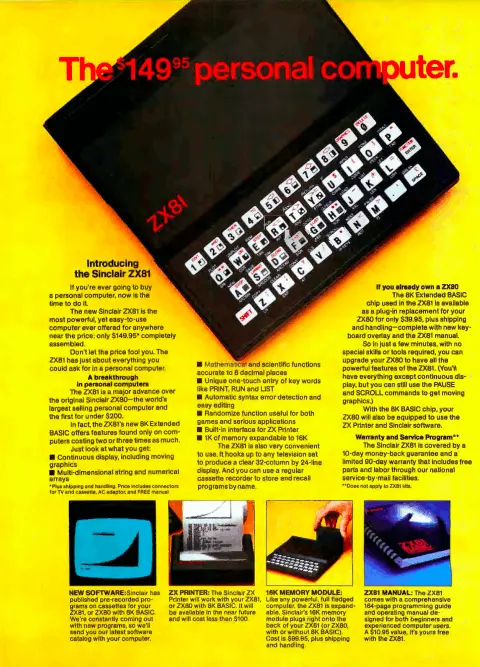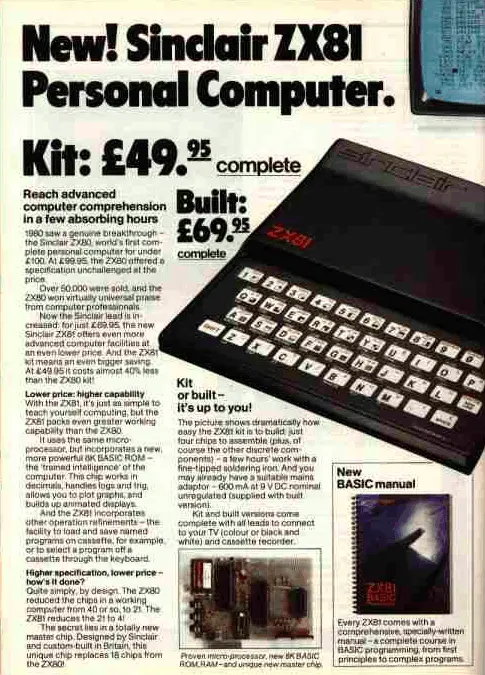3.
Tandy TRS-80
The idea that at some point in time Radio Shack was a cool place to buy electronics is difficult to process for many today. And the idea that Radio Shack made computers is even more difficult to assimilate for those born after the year 2000. But they did, and they came up with the TRS-80, which was quite refined for the time.
The TRS-80, also known as the Tandy Radio Shack TRS-80, was one of the first mass-marketed personal computers. Most likely, you would have gone to the Radio Shack store (albeit other retailers had it), and you really wanted to get it from Radio Shack itself, almost like going to the Apple store today. Let's make it clear, going to the Radio Shack store back then was like going to an amusement park. They had all kinds of gadgets, toys, audio, video, and of course computers. More fun than Apple store for sure.
Let's get back on track. The TRS-80 was introduced in 1977 by Tandy Corporation, a subsidiary of Radio Shack, and became one of the best-selling computers of its time. The TRS-80 was aimed at the home market and was known for its affordability and ease of use, which made it accessible to a wider audience. When you look at it, it was very nicely packaged (see images), and Radio Shack had all kinds of peripherals to hook up to it. If you set it up right, this looked like a personal computer that would sit in an office or a research lab.
There were many models produced. The original design was built around the popular Z80 processor (same as the Sinclair ZX81 and many computers of the time) and had a rudimentary version of the BASIC programming language, but good enough for anyone to write and run their own programs (making it interesting to many who wanted to dive into programming).
Radio Shack built a significant number of accessories and peripherals around the TRS-80, which really enhanced its capabilities. Monitors, cassette tape decks, disk drives, modems, voice synthesizer, and printers, plenty of printers were available from Radio Shack. While the initial target was home computing, the TRS-80 proved it could be used in small business settings and was lightly adopted in the corporate world. It was also used in schools, and for simple home productivity tasks, and was often credited with contributing with the popularization of home computers and helping to establish the personal computer market. Meaning, it could have been Apple; honestly it could, it had a very reputable name. there was plenty of support, and the machine was technically capable.
There was, however something about it. Actually, there was something missing; in other words, there was nothing really special about it. It was good. And that is it. It was not a C64, with flashy graphics, it was not an inexpensive Spectrum, it just did not have anything magical. Basically, it was a nice computer, but you could not fall in love with it; it was dull. Dull as any other appliance you had a home. It was missing that special sauce.
So, that's it for the TRS80, in the end it was not that exciting. And to be honest, Radio Shack did not play their cards well either, from a business perspective. The rest, you already know. Sad.
Wanna know more about the TRS-80? Follow this link.
















































